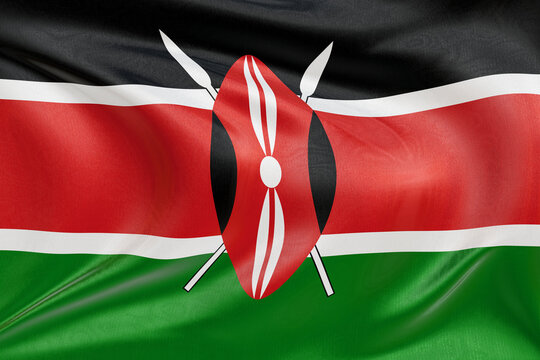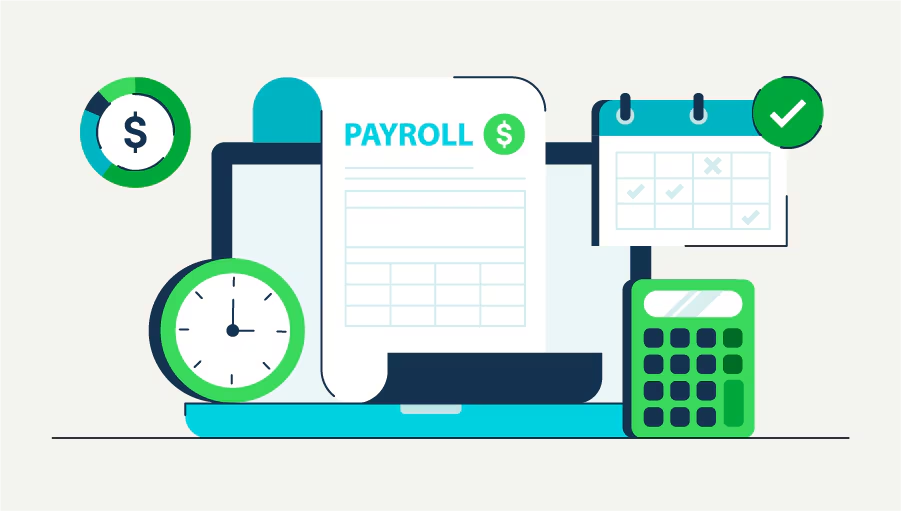Kenya has long been a global leader in digital payments thanks to M-Pesa. More than 50 million people across Africa now rely on M-Pesa, and in Kenya alone, mobile money accounts for over 50% of the country’s GDP in transaction value.
But M-Pesa was designed in 2007, at a time when blockchain and stablecoins didn’t exist. While it remains hugely successful, it’s also facing new challenges: cross-border payments are still expensive, remittances remain slow, and inflation in local currencies can eat into household savings. This is where stablecoins are starting to enter the conversation.
Stablecoins offer instant transfers, global reach, and protection from currency volatility. That’s not just fintech innovation, but also financial inclusion through stablecoins at scale. This blog talks about Kenya digital payments, M-Pesa crypto integration, mobile money and stablecoins, cross-border payments in Kenya, and much more.
M-Pesa Stablecoin Payments
M-Pesa is already the backbone of Kenya’s financial system, but its biggest limitation is that it’s still tied to local currency rails. For domestic transfers, that works well. The challenge comes when you move beyond Kenya’s borders or try to hedge against the Kenyan shilling’s volatility. That’s where stablecoins step in.
Stablecoins like USDT, USDC, and DAI are pegged to stronger global currencies such as the US dollar. By integrating stablecoins into M-Pesa, users could send and receive funds instantly across borders without worrying about fluctuating exchange rates or high remittance fees. For businesses, this shift is equally powerful. Stablecoin payments through M-Pesa would mean faster supplier settlements, predictable pricing, and better access to international customers.
TransFi makes this vision realistic. Its stablecoin rails connect 40+ fiat currencies, 80+ digital assets, and 250+ local payment methods. For M-Pesa users, this means plugging into global stablecoin networks without needing new infrastructure.
Kenya Digital Payments
Kenya has long been the poster child of mobile money adoption. With M-Pesa leading the charge, over 96% of Kenyan households now use mobile money services in some form. This level of penetration is unmatched anywhere else in the world, making Kenya a testing ground for what the future of digital payments could look like in Africa.
But here’s the catch: while M-Pesa revolutionized local transfers, Kenya is still figuring out how to plug into the global financial system in a way that is cost-effective and future-proof. Traditional banking rails in Kenya are slow and expensive, especially for cross-border transactions. Add in currency volatility, and businesses and families are left with less than what they were meant to receive.
That’s why stablecoins are becoming so relevant in Kenya’s digital payments story. TransFi lets businesses and individuals gain access to stablecoins and other digital currencies in a fully compliant and secure manner. By connecting 40+ currencies and 250+ local payment methods with stablecoin rails, TransFi makes it possible for Kenyan businesses and consumers to move funds globally without dealing with the old inefficiencies.
M-Pesa Crypto Integration
M-Pesa has been the backbone of Kenya’s financial inclusion for nearly two decades. But as digital commerce expands and more Kenyans work with international clients, the demand for crypto-friendly mobile wallets is rising. This is where the idea of M-Pesa crypto integration comes in.
If M-Pesa blockchain adoption could enable stablecoins in Africa directly within its mobile money ecosystem, it would instantly give millions of users access to a borderless financial network.
The appetite is already there. Kenya is one of Africa’s top crypto adopters, with surveys showing that over 4 million Kenyans actively own or use digital assets. That means M-Pesa users are already familiar with crypto, even if the app itself doesn’t officially support it. The challenge lies in how to merge M-Pesa’s trusted mobile infrastructure with the transparency and efficiency of stablecoins.
This is where platforms like TransFi become essential. By offering enterprise-grade APIs, global compliance, and AI-powered smart routing, TransFi can act as the bridge between M-Pesa and stablecoin networks.
Mobile Money and Stablecoins
Mobile money changed Africa. M-Pesa showed the world that you don’t need a bank branch to move money. But here’s the limitation: traditional mobile money works great within a country, yet struggles when the transaction crosses a border.
That’s where mobile money and stablecoins connect. Stablecoins in Africa add a universal layer that mobile money alone can’t provide. Instead of being tied to one currency or one country, stablecoins like USDT or USDC create a neutral digital cash that can move anywhere in seconds. When linked with mobile wallets, they give users the same simplicity they love in M-Pesa but with global reach.
By connecting 40+ currencies, 80+ digital assets, and 250+ local payment methods, TransFi creates the bridge between mobile money and stablecoins. Its AI-powered smart routing makes sure every transaction takes the fastest, cheapest rail available, while enterprise-grade compliance ensures regulators are on board.
Also read about: How Fintech Startups Can Build on Stablecoin Infrastructure
Cross-Border Payments in Kenya
For years, sending money in and out of Kenya has been expensive, slow, and complicated. Remittances from abroad keep millions of households running, yet the process is still costly and slow.
Stablecoins are the solution to the cross-border payments problem in Kenya because they are like digital dollars that travel across borders instantly. Rather than going through several banks, payments can be settled peer-to-peer and directly converted into Kenyan shillings.
Here’s why this matters:
- For families: Migrant workers sending money home can save on fees and deliver value instantly.
- For businesses: Exporters and digital service providers in Kenya can receive global payments in stablecoins, bypassing slow banking rails.
- For the economy: Lower remittance costs mean more money stays in Kenyan households, boosting local consumption and financial inclusion.
TransFi connects M-Pesa users to global stablecoin rails, supporting 40+ currencies, 250+ local payment methods and 80+ digital assets. For people and businesses in Kenya, it means cross-border payments can finally be fast, low-cost, and reliable.
Conclusão
Kenya has long been the gold standard for mobile money, and M-Pesa’s influence is undeniable. But the next leap is enabling M-Pesa stablecoin payments.
This transition isn't technologically driven; it's human-driven. Remittance senders and receivers, small enterprises entering global markets, and families who rely on cheap remittances all benefit. Stablecoins enable speed, predictability, as well as decreased costs, and mobile wallets offer familiarity as well as convenience. These are the pillars of a truly inclusive financial system.
And as much as the potential is evident, execution relies on infrastructure players that can connect global rails to local realities. That's where TransFi comes in. With its single API, enterprise-grade compliance, real-time settlements, and support in 100+ countries, TransFi ensures that businesses and platforms in Kenya can adopt stablecoin payments without friction. For businesses looking to tap into the global economy, talk to an expert at TransFi and experience stablecoin payments that feel local, fast, and reliable.
FAQs
- How M-Pesa could integrate stablecoin payments?
M-Pesa already has the trust and massive user base. It just needs a bridge to global stablecoin rails. With the addition of stablecoins, M-Pesa would allow users to send and receive money abroad with reduced fees and quicker settlements, with funds remaining stable in value. TransFi enables this to happen by bridging mobile money systems to 40+ currencies, 80+ digital assets, and 250+ local payment options with a single API. - What is M-Pesa and crypto's future in Kenya?
Mobile wallets like M-Pesa will remain the gateway to financial inclusion, whereas stablecoins will open up global liquidity and lower remittance costs. TransFi prepares Kenyan businesses for this future by providing the rails that bridge M-Pesa with the broader blockchain ecosystem. - What is the best way to use stablecoins for remittances in Kenya?
The optimal way is through systems that pair stablecoins with mobile wallets. With this arrangement, transfers remain quick, cheap, and value-stable. TransFi offers expertise in enabling stablecoins for remittances in Kenya, offering instant settlement, enterprise-grade compliance, and the lowest FX rates to ensure families and businesses receive more of what’s sent. - How to enable blockchain payments in African mobile money?
To support blockchain payments, mobile money systems require infrastructure that can convert between digital assets and local currencies on demand. TransFi addresses this by serving as the intermediary—bridging blockchain payments in African mobile money to global rails, and taking care of compliance and security behind the scenes.
5.What are the best stablecoin solutions for cross-border transactions in Kenya?
The best solutions combine mobile accessibility, stablecoin liquidity, and regulatory compliance. TransFi meets all three criterias. With global stablecoin rails, AI- powered routing for the fastest and cheapest transfers, and a single integration, TransFi is amongst the best stablecoin solutions for cross-border transactions in Kenya.
Table of Contents
Categoria
Suggested Article
Explore our products

Make global payments at the speed of a click

Aceitar pagamentos, remover fronteiras.

Unlock Seamless Digital Currency Transactions Anywhere








.png)














